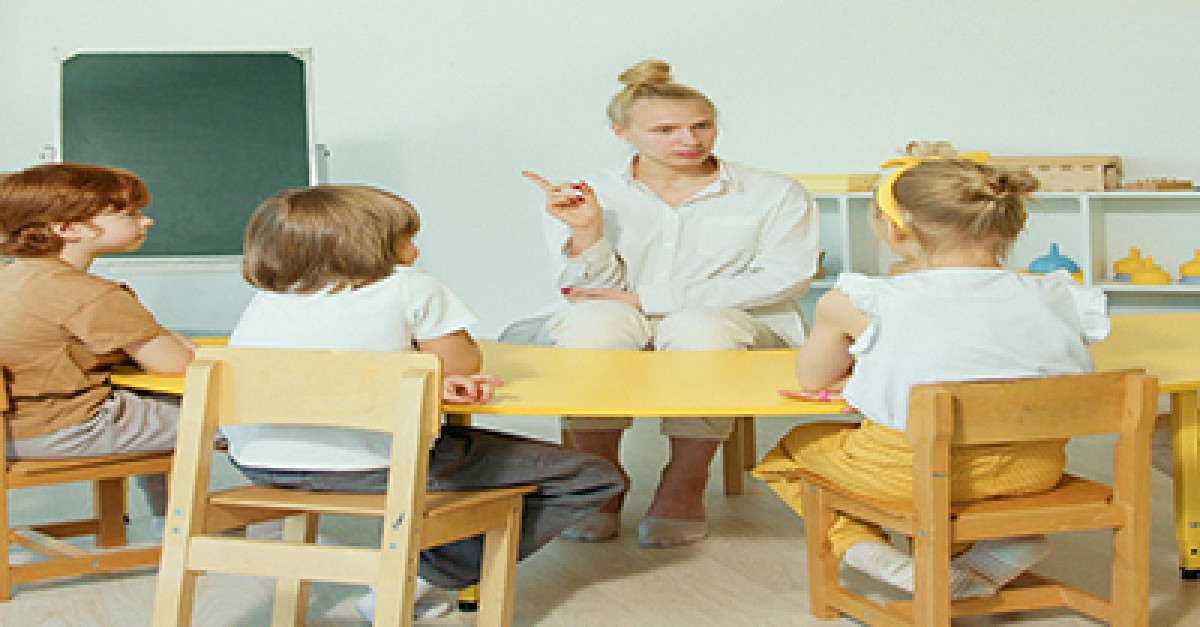Unlike models where empathy is seen as an indirect bonus of social interaction, Danish schools include a scheduled subject called “Klassens Tid” (Class Time). During these sessions, children come together in an environment that is intentionally designed to be both safe and supportive. The setting encourages them to open up about emotions, personal challenges, and classroom dynamics. This structure helps normalize conversations about feelings at an early age.
Key Elements and Their Benefits
-
Guided Emotional Expression:
-
What Happens: Children are given time to talk about their emotions and personal challenges.
-
Benefit: This practice helps kids articulate their feelings clearly, fostering self-awareness and emotional literacy.
-
-
Active Guidance by Teachers:
-
What Happens: Teachers facilitate these sessions, modeling active listening and guiding respectful, empathetic interactions.
-
Benefit: With teacher support, students learn essential social skills such as conflict resolution, understanding differing perspectives, and managing interpersonal conflicts constructively.
-
-
Building Emotional Intelligence:
-
What Happens: The recurring nature of these weekly sessions develops a routine where discussing and processing emotions becomes second nature.
-
Benefit: Over time, students build resilience, become more adept at handling stress and challenges, and are better equipped to collaborate with others.
-
-
Valuing Social Harmony and Cooperation:
-
What Happens: These sessions emphasize values like cooperation and social harmony, values deeply embedded in Danish culture.
-
Benefit: This promotes a classroom culture where respect and empathy are prioritized, which in turn strengthens peer relationships and creates a more inclusive, compassionate learning environment.
-
-
Positive Academic Impact:
-
What Happens: Studies have found that teaching empathy not only supports emotional well-being but also correlates with improved academic outcomes.
-
Benefit: When students feel emotionally secure and supported, their focus, motivation, and overall capacity to learn are enhanced, leading to better academic performance.
-
Specific Strategies Teachers Use
Teachers in Danish schools employ a range of thoughtful, hands-on strategies during “Klassens Tid” to help students explore their feelings, develop active listening skills, and practice conflict resolution. These strategies aren’t just about talking—they’re practical, interactive methods that build empathy step by step. Here are some specific strategies teachers use:
1. Circle Time and Structured Sharing
-
Circle Discussions: Teachers arrange students in a circle to create an inclusive atmosphere. In this setting, every student has an equal opportunity to speak and listen. The physical arrangement reinforces the idea that all voices matter.
-
Guided Sharing: Teachers set clear rules for respectful conversation. They might start with simple prompts such as, “What was one thing that made you feel happy or upset this week?” This helps create a routine where expressing feelings becomes a normalized part of the classroom experience.
2. Active Listening Techniques
-
Modeling Active Listening: Teachers demonstrate active listening by summarizing or paraphrasing what a student has shared. For example, if a student says, “I felt left out during group work,” the teacher might respond, “It sounds like you’re saying you felt isolated—would anyone else like to share a similar experience?”
-
Feedback Loops: After a student speaks, teachers encourage peers to reflect back what they heard, promoting empathy through understanding and validation.
3. Role-Playing and Conflict Resolution Scenarios
-
Role-Playing Exercises: Teachers set up simple role-playing scenarios where students act out common conflicts or situations that require empathy. For instance, one child might play the role of a friend feeling upset, while another practices comforting and supportive language.
-
Problem-Solving Meetings: After role-play, groups may discuss what strategies worked best to resolve the conflict. This practice helps children internalize effective conflict resolution techniques and understand different perspectives.
4. Use of Visual and Tangible Aids
-
Emotion Cards and Visual Scales: To help students articulate feelings that might be hard to verbalize, teachers sometimes use emotion cards or visual scales (like faces showing various emotions). These aids support the development of emotional vocabulary and help students match facial expressions with feelings.
-
Storytelling and Picture Books: Teachers might use books or stories that focus on themes of empathy and kindness. After reading, the class engages in guided discussions, drawing parallels between the characters’ challenges and their own experiences.
5. Reflective and Creative Activities
-
Journaling and Drawing: At the end of the session, teachers sometimes ask students to draw a picture or write a few sentences about what they learned about themselves or their classmates. This reflection reinforces personal insights and open-mindedness.
-
Mindfulness and Relaxation: Beginning or ending the session with a brief mindfulness exercise—such as deep breathing or a short meditation—helps students center themselves. This calm environment makes it easier for them to be open, honest, and empathetic in discussions.
6. Setting a Consistent, Safe Environment
-
Establishing a ‘Safe Space’: Teachers make it clear that what is shared in “Klassens Tid” stays in the room, building trust among the students. This rule allows them to speak freely without fear of judgment or repercussions.
-
Consistent Routines and Boundaries: By maintaining a regular schedule for these sessions and outlining clear behavioral expectations, teachers help students feel secure. This stability encourages openness and cooperation, key components in developing empathy.
How These Strategies Benefit Students
-
Emotional Intelligence: Regular practice in recognizing, expressing, and managing emotions contributes to stronger emotional awareness and regulation.
-
Conflict Resolution: Role-playing and guided conflict discussions give children tools to resolve disagreements constructively, both in and out of the classroom.
-
Social Harmony and Cooperation: As students learn to listen and validate each other’s feelings, overall classroom dynamics shift toward a more harmonious and supportive environment, reflective of broader Danish cultural values.
-
Improved Academic Engagement: When students feel emotionally understood and supported, they tend to be more confident, focused, and engaged in their studies.
By embedding these strategies into a regular, dedicated class session, Danish schools nurture not only academic growth but also the interpersonal skills that form the foundation of a compassionate society. These practices demonstrate that teaching empathy is both an art and a science—a dynamic process that prepares students for the social challenges of everyday life.







 On 10 December 2025, the Fair Work Commission issued a major determination affecting the Children’s Services Award 2010 (MA000120). These changes form part of the
On 10 December 2025, the Fair Work Commission issued a major determination affecting the Children’s Services Award 2010 (MA000120). These changes form part of the Over the next five years, educators across the sector will see steady, structured wage increases designed to lift pay to the new benchmark rates for
Over the next five years, educators across the sector will see steady, structured wage increases designed to lift pay to the new benchmark rates for The Fair Work Commission has introduced important changes to how cooks are classified and paid under the Children’s Services Award 2010. These changes recognise that
The Fair Work Commission has introduced important changes to how cooks are classified and paid under the Children’s Services Award 2010. These changes recognise that